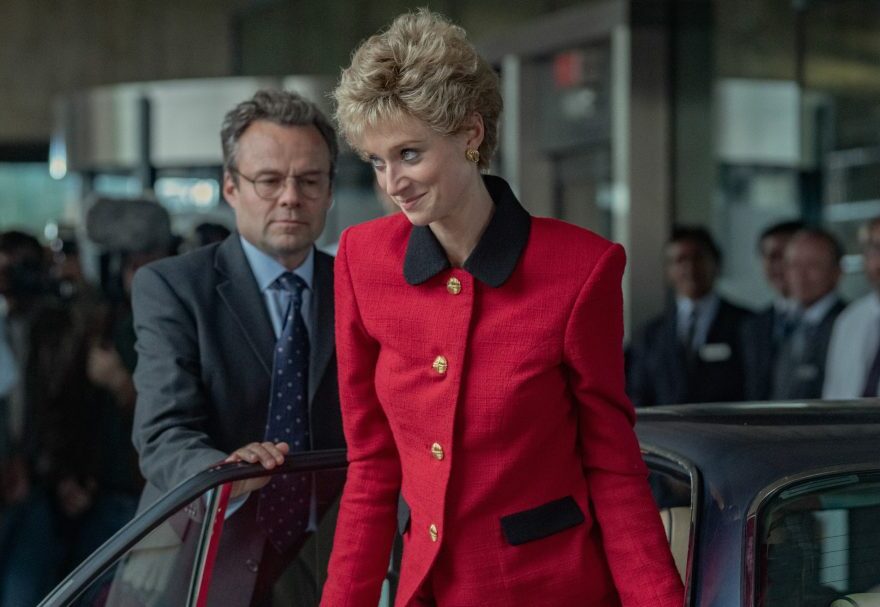The streamers’ UK revenues skyrocketed by more than 20% last year despite sub numbers remaining at a virtual standstill, according to Ofcom’s latest Media Nations report.
The combined turnover of the likes of Netflix, Amazon Prime Video and Disney+ hit nearly £3.3B in the nation, rising by 21.5% on the prior year and having now doubled over the past three years.
The regulator’s report put this down to a combination of price rises – notably Netflix in March 2022 and Prime Video in September 2022 – new revenue streams such as advertising and the plethora of new players launching including Paramount+ and Apple TV+, while overall subscriber numbers did increase slightly.
Related Stories

'Dreaming Whilst Black': Showtime Acquires Buzzy BBC Comedy From Big Deal Films & A24

'Love Island' Sparks More Than 1,000 Complaints As ITV Looks To Refresh UK Reality Show Next Year
All individual platforms saw revenue increases, with Disney+ rising by an impressive 40% to £383M and Netflix by the lower figure of 16% to £1.61B.
The report, however, said signs point to the market “entering a phase of maturity that poses challenges for future growth and sustainability.”
“Despite continued revenue growth, SVoD business models are under pressure as attracting and retaining customers becomes more challenging, with providers increasingly looking to identify new revenue-generating opportunities, better manage costs and focus on profitability,” added Media Nations, an annual report focusing on the British TV industry.
The streamers have all been experiencing teething problems of late and are currently on something of a commissioning hiatus due to the Hollywood strikes, although some shows are still being greenlit outside the U.S. “Streamer content investments remain high but are becoming more prudent as SVoD providers shift focus to profitability,” added the report. “As part of this, content licensing has re-emerged as a revenue opportunity, while Netflix is leading on password-sharing crackdowns in a bid to maximise the value of its users.”
In the UK, the report said the cost-of-living crisis plus price increases led to the percentage of UK households subscribing to any streamer dipping slightly over the year to 66%, having hit a high of 68% during the pandemic. At 59% of households, Netflix topped the pile, followed by Amazon Prime Video on 45% and Disney+ on 25%.
There were, however, high levels of overall satisfaction in the qualitative part of Ofcom’s survey, with 86% satisfied with Netflix, 82% with Disney+ and 80% with Prime Video. Netflix was the third most popular destination for audiences after ITV and BBC One.
“Significant decline” in older audiences
As has come to be expected, public broadcasters saw slight dips in audience across the year as viewing patterns continue to shift, but alarm bells may be ringing after Ofcom’s figures showed viewing from core older audiences “significantly declined” for the first time.
Over-64s watched almost 10% less broadcast TV in 2022 than the prior year and viewing was 6% down on the previous pre-pandemic year in 2019. At the same time, older people turned to subscription services, with the proportion signing up for Disney+ almost doubling to 12%, for example.
These figures will worry the likes of the BBC, ITV and Channel 5, who have long relied on older core audiences, and they may have contributed to the biggest ever annual drop in the amount of people who say they watched broadcast TV each week, which fell from 83% in 2021 to 79% in 2022. The figure was above 90% around five years ago.
Among younger audiences, broadcast TV viewing continued to decline rapidly, falling by 21% year on year for 4-34s. Broken down, children aged 4-15 were for the first time watching more linear TV per week than young adults aged 16-24, although only by a couple of minutes per week.
Ofcom’s report also shone a light on the rapid way in which mass audiences for the pubcaster’s biggest shows have declined over the past decade.
The number of individual episodes of shows being watched by more than 4 million viewers has halved since 2014, according to the report, which mainly put this down to less people tuning in for news bulletins and soaps. When it comes to shows watched by more than 6 million, the figure has tumbled from 1,172 to 213 across the same timeframe.
Mass viewers have by no means transferred to the SVoDs, however. Streamer shows made up just 4% of the episodes watched by more than 4 million last year, which Ofcom said “illustrates how fragmented the viewing landscape has become.” The most-watched shows of 2022 were major national events such as the World Cup and Queen Elizabeth II’s funeral.
Content spend shoots upwards
Following a tricky couple of years for production due to the Covid-19 pandemic, spend by the public broadcasters on original content rose by 10% to almost top £3B, with the BBC making up around half the figure.
Ofcom said the move was a positive one that showed the industry returned to something like normal but flagged negatives such as inflation in some genres, “lingering” Covid production costs and “inflationary pressure” affecting production-related expenses.
Spend on drama shot up by more than £100M to £339M and the amount of co-production money coming in from players outside the UK skyrocketed by nearly £200M to £680M, demonstrating that the big players are still very happy to co-produce British content.
Must Read Stories
‘Barbie’ Dancing Toward $1B Global, Will Stomp On Shark & Turtles: Weekend Preview
Leah Remini Sues Scientology: “Stalked, Surveilled, Harassed” For 10 Years
Besson’s ‘DogMan’ Gets Waiver; A-Listers Donate $1M Each To Foundation
Sony TV Veteran Jason Clodfelter Named President Of Television At Legendary
Read More About:
Source: Read Full Article





